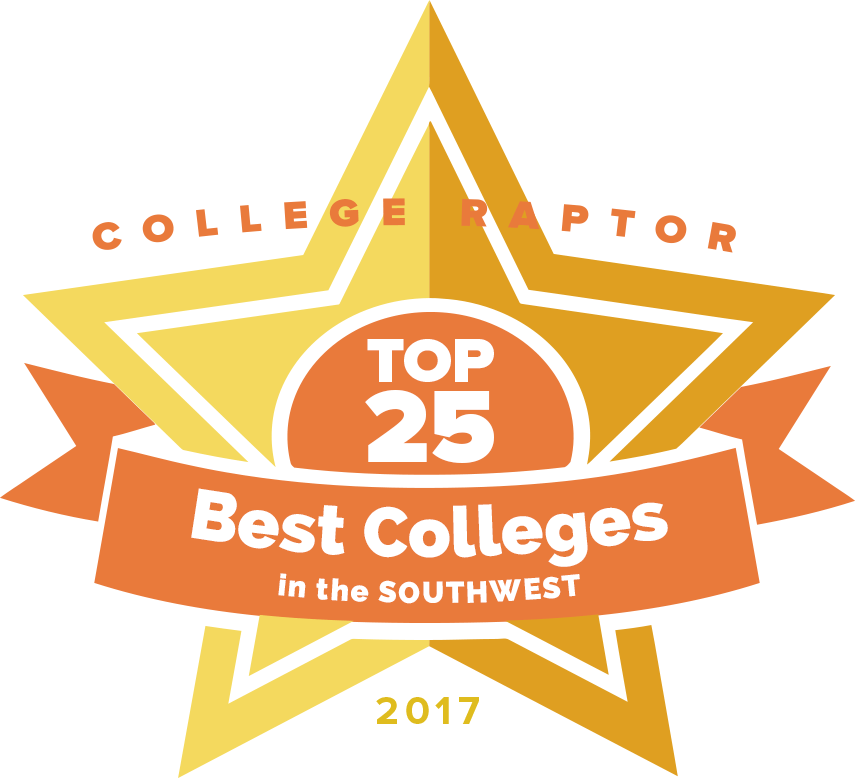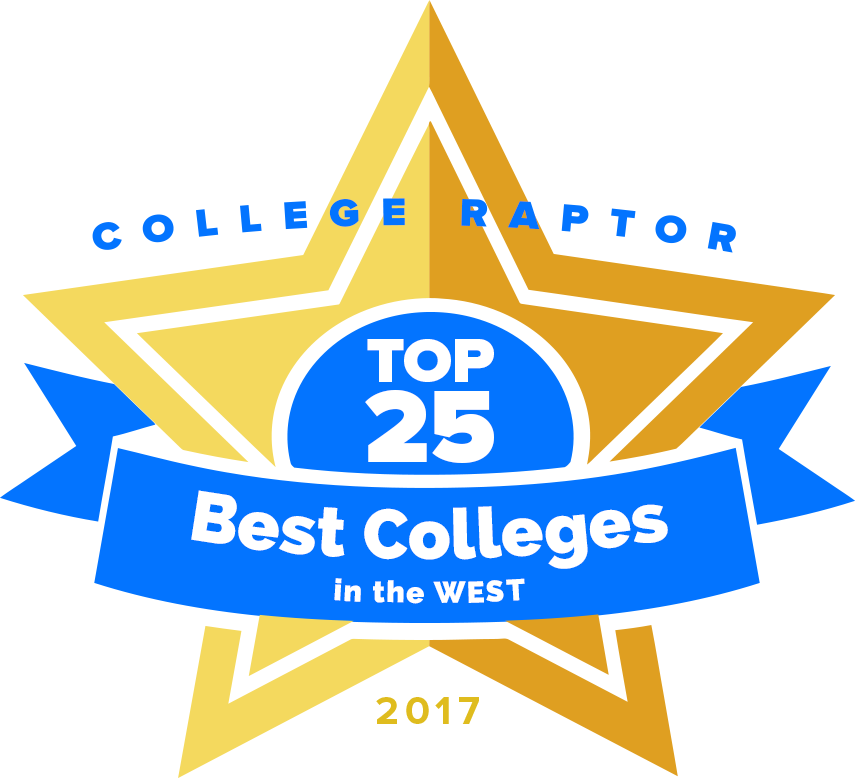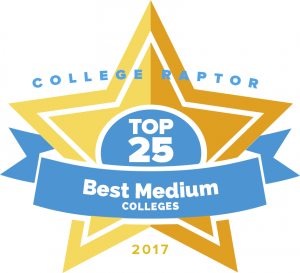 Everyone has their personal preference and comfort level when it comes to college size. Some people prefer the intimacy of a small school where they know everybody while others thrive at large universities where they only know a small portion of the student population. If you find yourself landing somewhere in between, then one of the following colleges may be the place for you!
Everyone has their personal preference and comfort level when it comes to college size. Some people prefer the intimacy of a small school where they know everybody while others thrive at large universities where they only know a small portion of the student population. If you find yourself landing somewhere in between, then one of the following colleges may be the place for you!
The differences between large, medium, and small colleges might differ from place to place. For the purposes of our list, we’re considering medium-sized colleges to have between 2,000 to 10,000 undergraduate students. [Note: Student enrollment includes both undergraduate and graduate students.]
25. Carleton College
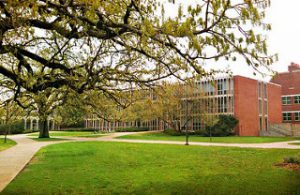
Flickr user CameliaTWU
Location: Northfield, MN
Student Enrollment: 2,057
College Type: Private nonprofit, 4-year
Known as the Knights, Carleton College has a fascinating history. It is named after donor William Carleton, who gave $50,000 to the school in 1871 after its president, James Strong, survived a carriage and train collision while fundraising for the college. The college has an impressive 97% first-year retention rate and a 91% 4-year graduation rate.
Learn more about Carleton College
24. Vassar College
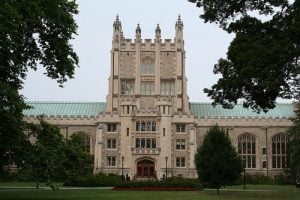
Flickr user prichman38
Location: Poughkeepsie, NY
Student Enrollment: 2,422
College Type: Private, nonprofit, 4-year
Incoming freshmen tend to have an ACT score between 30 and 33. For the SAT, the averages are 1,335 and 1,475. The most common major on campus is Economics, followed by Psychology, Biology, and English. Notable alumni include: poet Elizabeth Bishop, computer pioneer Grace Hopper, and actress Meryl Streep.
Learn more about Vassar College

23. Middlebury College
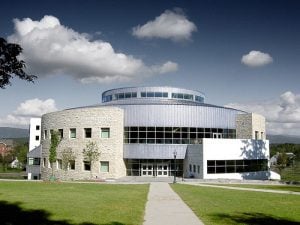
Flickr user daiji
Location: Middlebury, VT
Student Enrollment: 2,533
College Type: Private, nonprofit, 4-year
A Liberal Arts college with a 17% acceptance rate, Middlebury College has been the school of several notable alumni, including Alexander Twilight, the first African-American student to graduate from an American college or university. It boasts an impressive 97% first-year retention rate and an 8:1 student-faculty ratio.
Learn more about Middlebury College
22. United States Military Academy
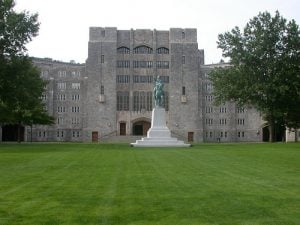
Flickr user Cliff
Location: West Point, NY
Student Enrollment: 4,414
College Type: Public, 4 year
With its motto of “Duty. Honor. Country.” this Academy—founded by former US President Thomas Jefferson—produces cadets with bachelor’s degrees in a number of academic fields. The most popular majors on campus include Mechanical Engineering, Economics, and Business Administration.
Learn more about the United States Military Academy
21. Tufts University
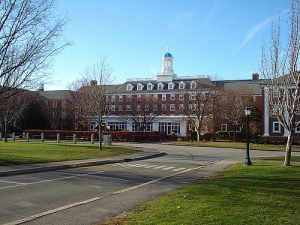
Flickr user Joe Wolf
Location: Medford, MA
Student Enrollment: 10,907
College Type: Private, Nonprofit, 4 year
This Doctoral / Research institution has a near equal distribution of undergraduate and graduate students. Of the ten schools within the university, 2 are undergraduate programs the remaining 8 are graduate schools. The ACT and SAT score averages of the incoming freshmen are quite high—30 – 34 for ACT, and 1,356 – 1,492 for the SAT.
Learn more about Tufts University
20. College of William and Mary
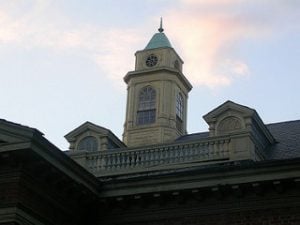
Flickr user benuski
Location: Williamsburg, VA
Student Enrollment: 8,437
College Type: Public, 4 year
The second oldest institution of higher learning in America, the College of William and Mary was founded by King William III and Queen Mary II. Each year, nearly 15,000 applications are sent in, though only 5,000 or so are accepted, giving the college an acceptance rate of 34%. Business Administration and Management is the most popular major on campus.
Learn more about the College of William and Mary
19. Georgetown University
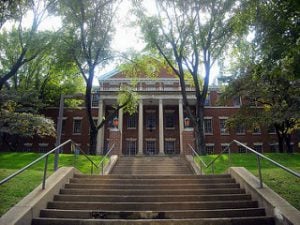
Flickr user Josh
Location: Washington, DC
Student Enrollment: 17,858
College Type: Private, nonprofit, 4 year
This historic research university was founded in 1789. Its law school rests on Capitol Hill and the school is closely entwined with the DC area. Georgetown is strong in academics, with its incoming freshmen scoring between 30 and 34 on the ACT, and between 1,328 and 1,504 for the SAT. For athletics, the school is considered an NCAA Division I-AA.
Learn more about Georgetown University
18. United States Air Force Academy

Flickr user Jacqueline Poggi
Location: Colorado Springs, CO
Student Enrollment: 3,925
College Type: Public, 4 year
The gyrfalcon is the mascot of this Academy, and their school colors are blue and silver. It is as academic as it is historic—drawing in about a million tourists every year. It has a student-faculty ratio of 8:1 and a 94% first-year retention rate. The most popular major on campus is Business Administration.
Learn more about the United States Air Force Academy
17. John Hopkins University
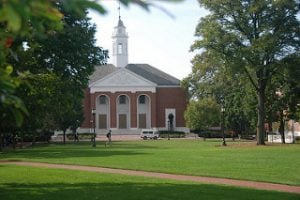
Flickr user Let Ideas Compete
Location: Baltimore, MD
Student Enrollment: 21,372
College Type: Private, nonprofit, 4 year
This Doctoral / Research university is known the world over for its academics. Incoming freshman average between 31 and 34 on their ACT exams, and 1,384 and 1,522 for the SAT. It is a highly selective school, with an acceptance rate of 14% for the 25,500 some applications that are sent in every year. Notable alumni include: President Woodrow Wilson, director Wes Craven, and author Gertrude Stein.
Learn more about Johns Hopkins University
16. Rice University
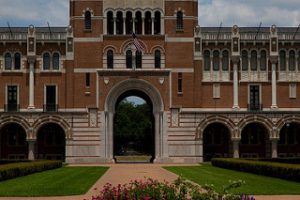
Flickr user Ed Schipul
Location: Houston, TX
Student Enrollment: 6,621
College Type: Private, nonprofit, 4 year
Sporting the colors blue and grey, the students at Rice are nicknamed the Owls, and their mascot is Sammy the Owl. Science and mathematics are highly regarded at this school, the most common majors being: Biochemistry, Psychology, Chemical Engineering, Kinesiology, and Mechanical Engineering.
Learn more about Rice University
15. Vanderbilt University
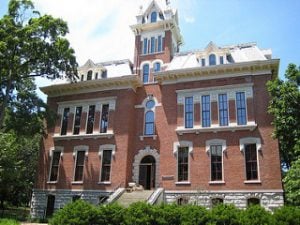
Flickr user Kevin Oliver
Location: Nashville, TN
Student Enrollment: 12,686
College Type: Private, nonprofit, 4 year
Nicknamed “Vandy”, this school is also a nationally recognized arboretum, with an abundance of trees and shrubs throughout the campus. The two most popular majors are economics and social sciences. The average ACT composite score for incoming first-year students is between 32 and 35, and the average SAT combined score is between 1,424 and 1,572.
Learn more about Vanderbilt University
14. Dartmouth College
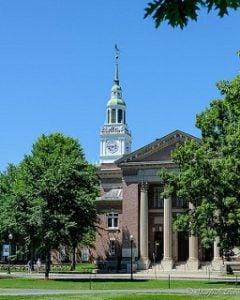
Flickr user Mike Fisher
Location: Hanover, NH
Student Enrollment: 6,298
College Type: Private, nonprofit, 4 year
Founded in 1769, Dartmouth is the smallest of all Ivy League schools. Theodore Geisel, also known as Dr. Seuss, was a 1925 graduate of the college and worked for the school’s humor magazine during his years there.
Learn more about Dartmouth College
13. Washington University in St. Louis
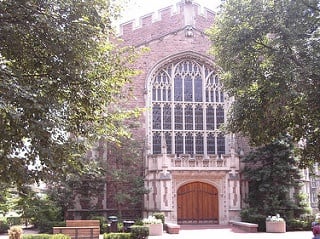
Flickr user jayo128
Location: St. Louis, MO
Student Enrollment: 14,348
College Type: Private, nonprofit, 4 year
Psychology and Biology are the most popular majors at this university, where incoming ACT composite scores are between 32 and 34, and SAT combined scores are between 14,12 and 1,526. The university offers classes on campus and through distance learning, for both undergraduate and graduate students.
Learn more about Washington University in St. Louis
12. Northwestern University
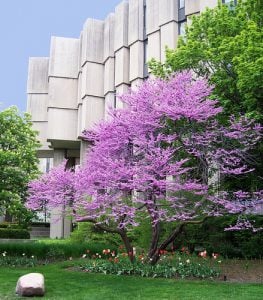
Flickr user Allan Tokuda
Location: Evanston, IL
Student Enrollment: 21,554
College Type: Private, nonprofit, 4 year
Settled near the city of Chicago, Northwestern University offers more than 120 majors for undergraduate students to choose from. The school is an NCAA Division-I university, with close to 500 student-athletes.
Learn more about Northwestern University
11. Duke University
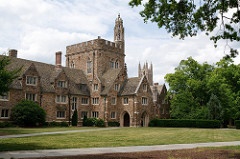
Flickr user Nan-Cheng Tsai
Location: Durham, NC
Student Enrollment: 15,856
College Type: Private, nonprofit, 4 year
Duke has produced an impressive number of Rhodes, Fulbright, Marshall, Truman, Goldwater, and Udall Scholars. The most popular degrees are public policy analysis and economics, and the university has a first-year retention rate of 97%.
Learn more about Duke University
10. Williams College
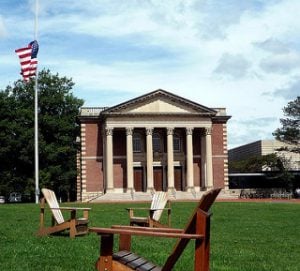
Flickr user Ethan Kan
Location: Williamstown, MA
Student Enrollment: 2,126
College Type: Private, nonprofit, 4 year
The average ACT composite for incoming first-year students ranges between 30 and 34, and the average SAT combined score ranges between 1,349 and 1,535. Williams College also boasts a delightful purple cow as their mascot, nicknamed Ephelia.
Learn more about Williams College
9. University of Notre Dame
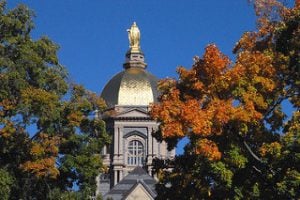
Flickr user Dan Dzurisin
Location: Notre Dame, IN
Student Enrollment: 12,179
College Type: Private, nonprofit, 4 year
At the University of Notre Dame, students can live in one of 29 single-sex residence halls on campus. The most popular majors are finance and accounting, followed closely by accounting. Condoleezza Rice received her master’s degree in political science from the university in 1975.
Learn more about the University of Notre Dame
8. Brown University
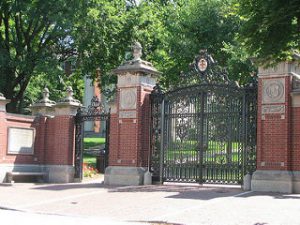
Flickr user thurdl01
Location: Providence, RI
Student Enrollment: 9,181
College Type: Private, nonprofit, 4 year
Home to Bruno the Bear, Brown University has graduated a wealth of notable alumni. This research university was the first to accept students regardless of their religious affiliation and has a 9:1 student to faculty ratio.
Learn more about Brown University
7. Columbia University in the City of New York
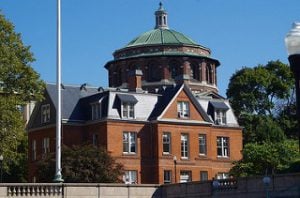
Flickr user Mike Steele
Location: New York City, NY
Student Enrollment: 27,589
College Type: Private, nonprofit, 4 year
Columbia was founded before the Declaration of Independence was signed, and was the first school to in America to grant an M.D. degree. Columbia has a 6:1 student to faculty rate. Theodore Roosevelt, Franklin Delano Roosevelt, and Ruth Bader Ginsburg are all graduates of Columbia Law.
Learn more about Columbia University in the City of New York
6. United States Naval Academy

Flickr user Steven
Location: Annapolis, MD
Student Enrollment: 4,511
College Type: Public, 4 year
The campus of the Naval Academy is a National Historic Landmark, and the motto is “From Knowledge, Sea Power”. The academy has a 98% first-year retention rate, and the most popular majors are economics and systems engineering. All students are required to live on campus, and the academy is a member of the NCAA.
Learn more about the United States Naval Academy
5. University of Chicago
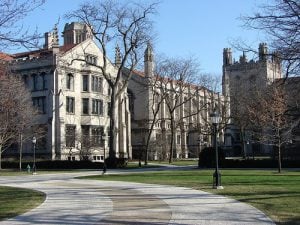
Flickr user Luiz Gadehla Jr
Location: Chicago, IL
Student Enrollment: 15,097
College Type: Private, nonprofit, 4 year
The University of Chicago boasts a 100% first-year retention rate, and a 6:1 student to faculty ratio. Founded by John D. Rockefeller in 1890, UChicago has since given birth to 89 Nobel Prize winners, 5 of whom currently still teach at the institution.
Learn more about the University of Chicago
4. Massachusetts Institute of Technology

Flickr user Matthew Robinson
Location: Cambridge, MA
Student Enrollment: 11,319
College Type: Private, nonprofit, 4 year
Also known as MIT, the Massachusetts Institute of Technology is well known for its science, technology, and engineering programs as well as economics and management. Alumni are responsible for creating 4.6 million jobs among 30,000 companies. The overall revenue of these companies comes to approximately $1.9 trillion which equates MIT alumni with the 10th largest economy in the world.
Learn more about the Massachusetts Institute of Technology
3. Stanford University

Flickr user Robbie Shade
Location: Stanford, CA
Student Enrollment: 16,963
College Type: Private, nonprofit, 4 year
Stanford University has a 4:1 student to faculty ratio and an average ACT score of 33. Of the nearly 17,000 enrolled students, 97% live on central campus which is primarily located in Silicon Valley. Its location fosters an innovative, entrepreneurial mindset and culturally diverse student population.
Learn more about Stanford University
2. Yale University
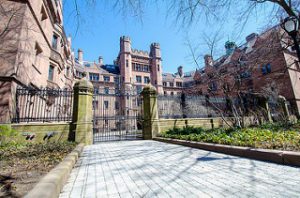
Flickr user m01229
Location: New Haven, CT
Student Enrollment: 12,336
College Type: Private, nonprofit, 4 year
Founded in 1701, Yale is the third-oldest higher education institution in the country. It is also home to the third-largest university library collection in the country with 15 million volumes. Furthermore, Yale is the alma mater of 5 U.S presidents, 19 supreme court justices, and 13 living billionaires.
Learn more about Yale University
1. Princeton University
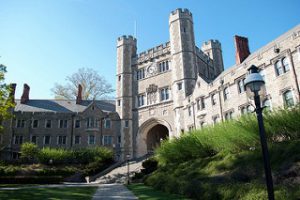
Flickr user Jon Niola
Location: Princeton, NJ
Student Enrollment: 8,088
College Type: Private, nonprofit, 4 year
Princeton was established prior to the American Revolution as one of the nine colonial colleges. Today, it offers highly esteemed programs in the humanities, social sciences, natural sciences, and engineering. Notable Princeton alumni include Michelle Obama, John Adams, Woodrow Wilson, Scott Fitzgerald, Steve Forbes, Meg Whitman, and Brooke Shields.
Learn More about Princeton University
—
Each of these rankings is based on an analysis of data about the school’s selectivity, financial health, academic rigor, and student success. We’ve outlined our full methodology here.


